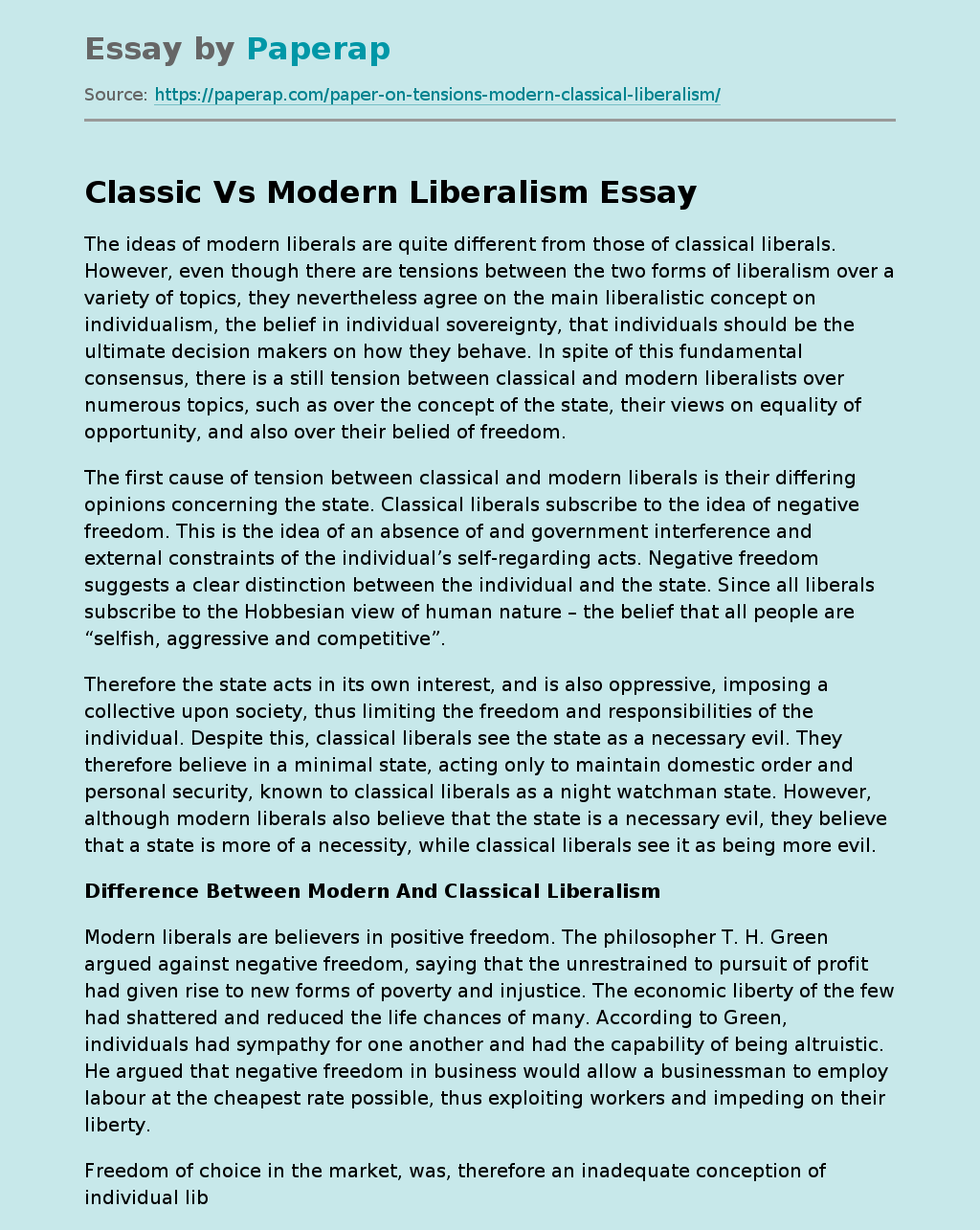Classic Vs Modern Liberalism
The ideas of modern liberals are quite different from those of classical liberals. However, even though there are tensions between the two forms of liberalism over a variety of topics, they nevertheless agree on the main liberalistic concept on individualism, the belief in individual sovereignty, that individuals should be the ultimate decision makers on how they behave. In spite of this fundamental consensus, there is a still tension between classical and modern liberalists over numerous topics, such as over the concept of the state, their views on equality of opportunity, and also over their belied of freedom.
The first cause of tension between classical and modern liberals is their differing opinions concerning the state. Classical liberals subscribe to the idea of negative freedom. This is the idea of an absence of and government interference and external constraints of the individual’s self-regarding acts. Negative freedom suggests a clear distinction between the individual and the state. Since all liberals subscribe to the Hobbesian view of human nature – the belief that all people are “selfish, aggressive and competitive”.
Therefore the state acts in its own interest, and is also oppressive, imposing a collective upon society, thus limiting the freedom and responsibilities of the individual. Despite this, classical liberals see the state as a necessary evil. They therefore believe in a minimal state, acting only to maintain domestic order and personal security, known to classical liberals as a night watchman state. However, although modern liberals also believe that the state is a necessary evil, they believe that a state is more of a necessity, while classical liberals see it as being more evil.
Difference Between Modern And Classical Liberalism
Modern liberals are believers in positive freedom. The philosopher T. H. Green argued against negative freedom, saying that the unrestrained to pursuit of profit had given rise to new forms of poverty and injustice. The economic liberty of the few had shattered and reduced the life chances of many. According to Green, individuals had sympathy for one another and had the capability of being altruistic. He argued that negative freedom in business would allow a businessman to employ labour at the cheapest rate possible, thus exploiting workers and impeding on their liberty.
Freedom of choice in the market, was, therefore an inadequate conception of individual liberty. For this reason Green developed the idea of positive freedom which would give people freedom. Hence he developed the idea of positive freedom which would give people freedom from the social evils which crippled people’s lives. Freedom is therefore the ability of the individual to develop and achieve individuality. This involves the ability of individual to realise their own potential, attain skills, knowledge and achieve fulfilment. The working class is therefore held back by the disadvantages of poverty, sickness, unemployment and ignorance.
Classic Vs Modern Liberalism. (2019, Dec 05). Retrieved from https://paperap.com/paper-on-tensions-modern-classical-liberalism/

